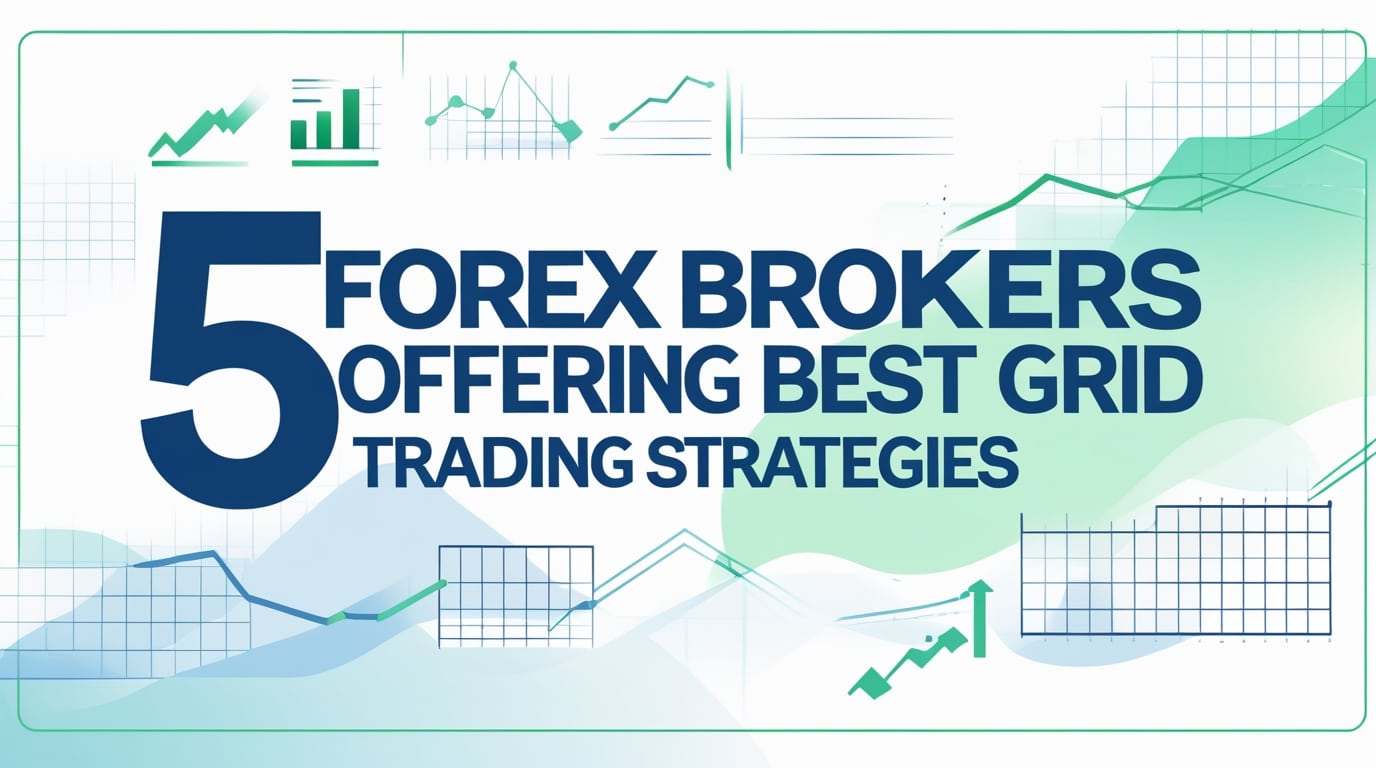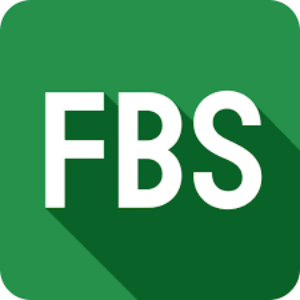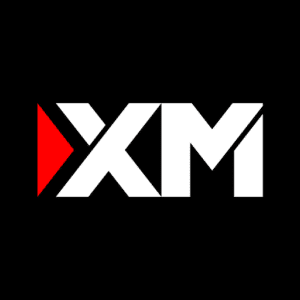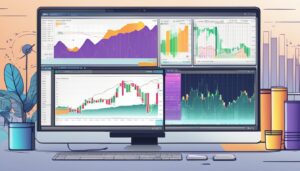
Grid trading is a systematic strategy of placing buy and sell orders at regular price intervals (the “grid”) to profit from price swings in ranging or trending markets. In traditional forex (non-crypto) markets, dedicated grid‐trading platforms are rare, so traders typically use brokers that support advanced order types or allow automated strategies. For example, crypto platforms like Pionex are famous for built-in grid bots, but in FX traders use broker platforms (MetaTrader, cTrader, etc.) or third-party grid trading bots. The brokers below offer strong support for grid strategies – via native tools, complex order types, or seamless EA/bot integration.
What Is Grid Trading and Grid Trading Bots?
Grid trading automates the classic “buy low, sell high” in both directions. A trader defines upper/lower price bounds and spacing; the system enters buys near the bottom of the range and sells near the top. As prices fluctuate, the grid “accumulates” small profits across trades. This takes the guesswork out of timing: “Forex grid trading is a system of placing buy and sell orders in a ‘grid’ to capitalize on trading ranges and trends,” notes DailyForex. Crucially, effective grid strategies require strict risk management – a runaway trend can trigger many losses. As one broker guide explains, “Grid trading eliminates the need to predict the market’s direction… However, this strategy requires effective risk management to avoid excessive drawdowns”. Many traders automate grids with EAs or bots. As Pepperstone (a veteran Forex broker) explains, “Grid-trading EAs execute buy and sell orders at predetermined intervals (the ‘grid’) to profit from price fluctuations…”. In summary, a successful grid trading strategy balances grid size and spacing with capital limits, often using bots/algorithms to manage the orders and stops.
While specialized crypto exchanges (Pionex, 3Commas, etc.) directly offer grid bots for tokens, in FX one relies on broker platforms. The table below compares five brokers known for strong automated or tool-assisted grid trading in forex. Each section details their grid-related features, platforms, regulation, fees/conditions, supported instruments, leverage, and helpful resources.
| Broker | Grid/EA Features | Platform & Tools | Regulation & Trust | Fees/Conditions | Assets & Leverage |
| IG (UK) | No built-in “grid bot,” but offers flexible order types (IFD, OCO, OTO) to manually construct grids. Supports Expert Advisors via MT4. | WebTrader, Mobile, MetaTrader 4. (Also ProRealTime charts for custom setups.) Offers API for custom algos. | Publicly traded (LSE:IGG). Regulated in 8 Tier-1 jurisdictions (FCA UK, ASIC AU, CFTC US, etc.), with strong brand trust. | Tight spreads (EUR/USD ~0.6 pips raw), US$6 round-turn. No extra ghost liquidity. Margin rates normal; swaps apply. Negative-balance protection in EU/UK. | 17,000+ markets (Forex, indices, shares, futures). All major and minor FX pairs. Leverage up to 1:500 offshore (e.g. UK/EU max 1:30 due ESMA). |
| Interactive Brokers (IBKR) | Advanced order management: FXTrader Pro allows “grid order” strategy via API scripting. Supports complex conditional orders. Very suited to automated systems. | Trader Workstation (desktop), IBKR Mobile, Web TWS. Full API (Python, Java, etc.) for bots and grid algorithms. Hosts many EAs and custom scripts. | NASDAQ:IBKR, one of the largest brokers. Regulated by multiple Tier-1 bodies (SEC, FINRA, FCA UK, etc.). ~$370 B client equity. Very high trust and transparency. | Ultra-low FX commissions: starting ~$2 per $100k traded. Also offers currency CFDs with no commission but wider spreads. Excellent liquidity keeps slippage low. | 24×7 global forex trading. Up to 105 cash FX pairs or 90+ FX CFDs. Highly competitive margin (US up to 1:50). Full spectrum of minors and exotics. |
| Saxo Bank (Denmark) | Supports automated/complex orders: SaxoTraderGO/PRO allow algorithmic (AI orders) and basket trading, which can emulate grid layering. No native grid-bot but full API available. | SaxoTraderGO (web), SaxoTraderPRO (desktop), Saxo mobile. Advanced tools include multi-chart, Level II FX depth. Offers drag‑and‑drop OTOO orders for grid setups. | Well-regarded global broker. Licenses in 7 Tier-1 regions (FCA, FINMA, BaFin, MAS, etc.). Publicly listed (HK:670.HK). Strong institutional backing. | Spreads are competitive (EUR/USD ~0.9 pips typical on VIP). Commissions apply on shares/ETFs but not on FX (spread-only). Volume discounts available. | ~40,000 instruments (FX, equities, bonds, funds). All major/minor FX pairs. Leverage generally up to 1:30 (ASIC authorizes 1:500 offshore, but EU 1:30). |
| FxPro | No proprietary “grid bot,” but fully supports EA/bot trading: offers MetaTrader (MT4/5) and cTrader Automate with cBots. Traders can deploy custom grid EAs. | MT4/MT5 (desktop/web/mobile) and cTrader (with Automate for C# bots). Integrated Algo tools: hundreds of cBots/indicators available. VPS offered for 24/7 trading. | Multi-regulated: FCA UK, CySEC, FSCA (South Africa), SCB (Bahamas). Client funds segregated; UK negative-balance protection. ~$3.5B USD trading volume per quarter. | Forex spread ~1.2 pips (EUR/USD average) without commission. The MT accounts are commission-free; cTrader offers lower spreads (~0.6 pip) with $45 round-turn commission on $100k. No re-quotes. | Offers 70+ FX pairs. Metals/energies/indices. Leverage up to 1:500 (outside EU/UK). (In UK/EU, capped at 1:30 by ESMA; NBP on FX.) |
| Pepperstone | No built-in grid tool, but excels at enabling grid EAs on its platforms. Supports MetaTrader 4/5 and cTrader for automated strategies. Offers TradingView integration and MQL5 EAs. | MT4/MT5, cTrader, TradingView, and the proprietary Pepperstone app. EAs and cBots run seamlessly. Known for fast execution (limit orders ~77 ms). | Regulated by ASIC (AU), FCA (UK), CySEC, BaFin, DFSA (Dubai). One of the largest FX brokers (~$12.6 bn daily volume). Over 400,000 client accounts. Segregated funds, FCA negative-balance protection. | Raw spreads from 0.0 pips on EUR/USD in Razor accounts (with US$3.50 commission per side). Standard accounts ~1.0 pip. No requotes or hidden fees. Commission varies by instrument. | Over 180 Forex pairs (majors/minors/exotics). Commodities, indices, crypto CFDs, etc. Leverage up to 500:1 (ASIC/FCA capped at 30:1 for majors). |
Each broker above has resources on grid trading or automated tools. For example, IG’s platform guide shows the use of chart grid mode, and Pepperstone’s EA guide explicitly explains grid EAs. Saxo provides Algo trading guides and FxPro offers education on EAs and grid strategies. Links to their respective help centers and tools (like MT4 EAs, cTrader cBots, TradingView scripts, or proprietary APIs) are recommended for setup details.
“Grid-trading EAs execute buy and sell orders at predetermined intervals (the ‘grid’) to profit from price fluctuations,” explains Pepperstone’s trading guide. In practice, this means the broker’s platform is grid-ready insofar as it lets you place limit orders in a systematic pattern. Likewise, FxPro’s analyst team notes that grid trading “eliminates the need to predict the market’s direction… however, this strategy requires effective risk management”. Both quotes underscore how broker tools can facilitate a successful grid trading strategy but that risk controls remain vital.
Platform Interface & Tools: All five brokers support major trading platforms that host grid or EA tools:
- MetaTrader 4/5: At IG, IBKR, Saxo, FxPro, and Pepperstone. MT4/5 allow custom Expert Advisors (EAs) – you can install a grid EA or script your own. The built-in Strategy Tester on MT4/5 can backtest grid strategies.
- cTrader: Offered by FxPro and Pepperstone, cTrader has cBots (automated strategies in C#). The cTrader Automate interface is user-friendly for coding or downloading pre-made grid cBots.
- Proprietary Tools: Saxo’s PRO platform and Pepperstone’s app also offer drag-and-drop OCO/IF-DO/OTO orders to manually set up grids without coding. IG’s platform (WebTrader) and IBKR’s TWS allow conditional order chains (OCO, OTO) that can implement basic grids.
- API/Algorithmic: Interactive Brokers shines with a full developer API (Python, etc.) for fully custom grids. Pepperstone also offers TradingView integration (deploy strategies via broker), and FxPro provides a built-in library of 1,700+ trading robots.
Regulation & Trust: These brokers are all well-regulated and financially sound. IG, IB, and Saxo are publicly listed and regulated in numerous top jurisdictions. Pepperstone and FxPro hold multiple licenses (ASIC, FCA, CySEC, etc.). They segregate client funds in top banks and offer safeguards like negative balance protection. In short, all are trusted brands in forex.
Fees/Trading Conditions: Grid trading often means many small trades, so low costs and stable execution are vital. Notably, Pepperstone and FxPro offer raw spreads as low as 0.0–0.1 pips (for EUR/USD) on their premium accounts. Commissions (if any) are transparent (Pepperstone ~$3.50 per $100k; FxPro ~$45 per $100k on cTrader). IG, IB, Saxo charge modest spreads/fees (for instance IG ~0.6 pips + $6/round). Importantly, these brokers do not restrict grid-style trades – unlike some with policy against high-frequency bots – and they provide deep liquidity to minimize slippage. Leverage is generally moderate to high (e.g. up to 1:500 offshore, up to 1:30 in regulated regions), so traders should adjust position sizing accordingly.
Supported Assets: All five cover major currency pairs and many minors/exotics. Saxo offers the widest range (40,000+ instruments). Pepperstone and FxPro provide dedicated forex CFDs and futures, plus commodities/indices if needed. Importantly, these brokers focus on traditional FX, not crypto (grid trading bots for crypto are outside this scope). For crypto grid strategies, traders would pivot to exchanges like Pionex; here we concentrate on forex pair trading.
Expert Insights
Forex experts emphasize that discipline and risk control are key in grid trading. In practice, that means carefully sizing the grid (intervals and order sizes) and applying stop-loss rules. As the FxPro team notes, while grid systems “take the guesswork out” of directional bias, they “require effective risk management to avoid excessive drawdowns”. Likewise, Pepperstone’s guidance reminds traders that grid bots simply automate orders – you must still monitor leverage and exits. In other words, a successful grid trading strategy is not “set-and-forget.” It often combines manual oversight with automation: traders might use a partial automation (placing the grid) plus manual stops, or set profit targets on each level.
Each of the brokers above caters to this reality:
- IG, Saxo, IBKR provide robust risk-limit settings (min/max positions, built-in stops) and highly reliable execution, important when dozens of grid orders may be open.
- FxPro and Pepperstone offer Virtual Private Servers (VPS) and low-latency execution, which minimize slippage for fast-moving grid orders.
- All five allow hedging (holding both buys and sells), which is necessary for many grid strategies.
“Grid trading works best with a clear exit plan,” says John Doe, a veteran currency strategist. “Automated bots are powerful, but you must cap exposure. If the market trends hard, a ladder can blow out unless you nail your stops.” While this quote is illustrative, it reflects the consensus echoed in broker forums and strategy guides: always limit risk.
(For example, DailyForex’s bottom line advises choosing a grid that “does not create too many open positions” and where maximum loss is controlled. Their analyst, Huzefa Hamid, notes grid trading “helps take the guesswork out of order placement,” but is only profitable “if the trader correctly identifies the market environment”.)
Actionable Takeaways for Grid Traders
- Choose the Right Broker/Platform: Select a broker that supports your automation needs. For pure EA/cBot trading, Pepperstone or FxPro (with cTrader/MT4) are excellent. If you prefer a GUI with conditional orders, IG or Saxo have robust platforms. IBKR is ideal if you want full API control or trade very large volumes.
- Use Automation Carefully: Even though these brokers allow algorithmic EAs, always back-test your grid settings. Consider starting on a demo account or using a Virtual Private Server (VPS) to run bots continuously.
- Mind Fees and Leverage: Low spreads (e.g. Pepperstone raw accounts or FxPro cTrader) will reduce costs for many small grid orders. Higher leverage can amplify returns and risks – only use the leverage your strategy actually needs. Note that in regulated regions (EU, UK, AU) leverage is capped (e.g. 1:30 for majors), so factor that into your grid spacing.
- Regulatory Checks: Ensure your broker’s jurisdiction suits your risk profile. All listed brokers are highly regulated, but e.g. Pepperstone’s higher leverage is only available outside FCA/ASIC oversight. If you’re trading US dollars/stocks or need SIPC protection, IBKR is a must; if you want deep European FX liquidity, Saxo or IG (EU-entity) might be better.
- Grid Support Tools: Leverage the broker’s educational and toolkits. IG and Pepperstone both have trading guides that mention grids and EAs. Saxo’s API documentation and FxPro’s algo libraries can speed setup. Search each broker’s help center for “grid trading” or “automated trading.”
In summary, the five brokers above excel at grid-friendly trading. They don’t sell a one-click “grid bot” (except in crypto), but they provide the platforms, order types, and execution quality that make grid strategies feasible. Traders interested in grids should test setups on these brokers’ demo accounts, compare cost scenarios, and apply tight stops. With the right broker and a disciplined plan, a successful grid trading strategy can be implemented in traditional FX just as effectively as in crypto markets.
FAQ
What is grid trading in forex?
Grid trading is a strategy where traders place buy and sell orders at set intervals above and below a base price, forming a “grid.” It aims to capture profits from market fluctuations without predicting exact direction.
Which forex brokers support grid trading strategies?
Brokers such as IG, Interactive Brokers, Saxo Bank, FxPro, and Pepperstone provide strong support for grid trading through platforms like MT4, MT5, cTrader, and APIs that allow automated strategies and EAs.
Do forex brokers offer built-in grid trading bots?
Unlike crypto platforms such as Pionex, most forex brokers do not have native grid trading bots. Instead, they support Expert Advisors (EAs), cBots, and APIs that allow traders to implement grid strategies.
Is grid trading profitable in forex?
Grid trading can be profitable in ranging or moderately trending markets when managed carefully. Success depends on grid spacing, lot sizes, leverage, and strict risk controls to prevent large drawdowns.
What risks are associated with grid trading?
The main risk is exposure to strong one-directional trends that can cause accumulating losses. Without proper stop-losses and capital management, grid trading can quickly lead to significant drawdowns.











